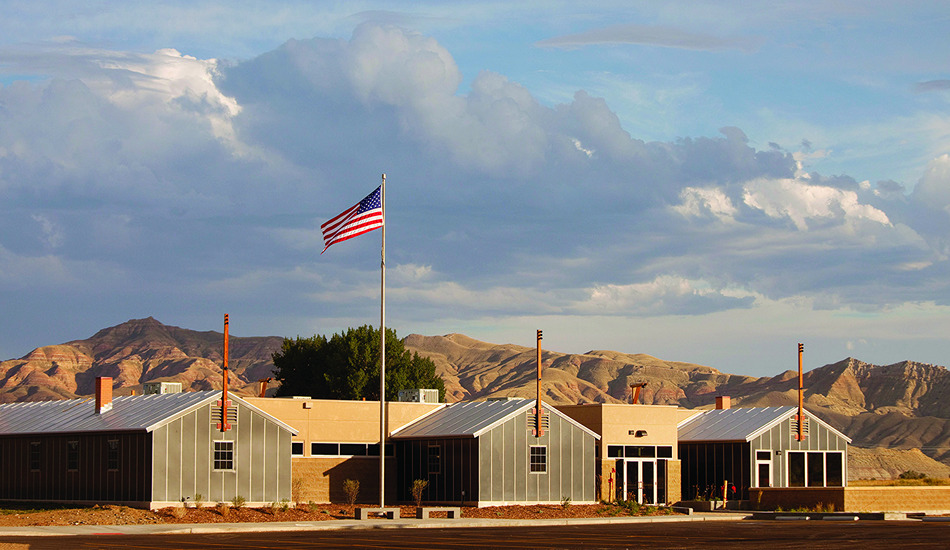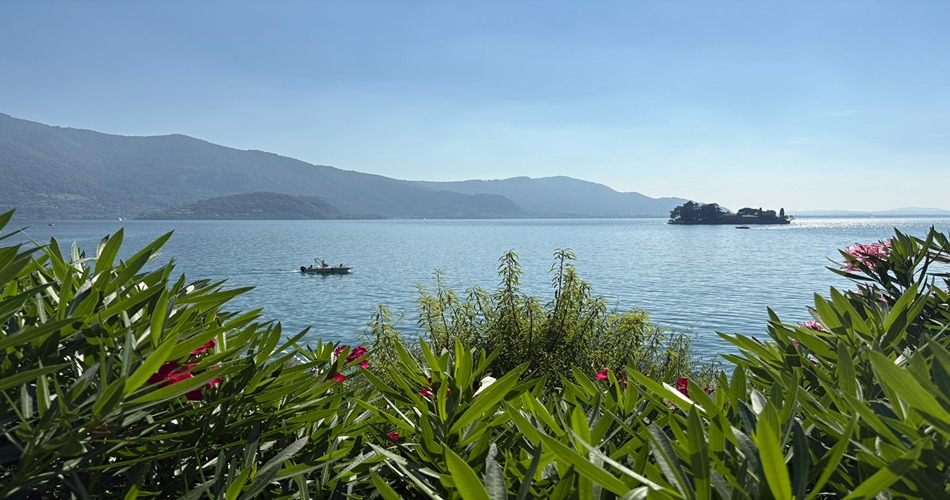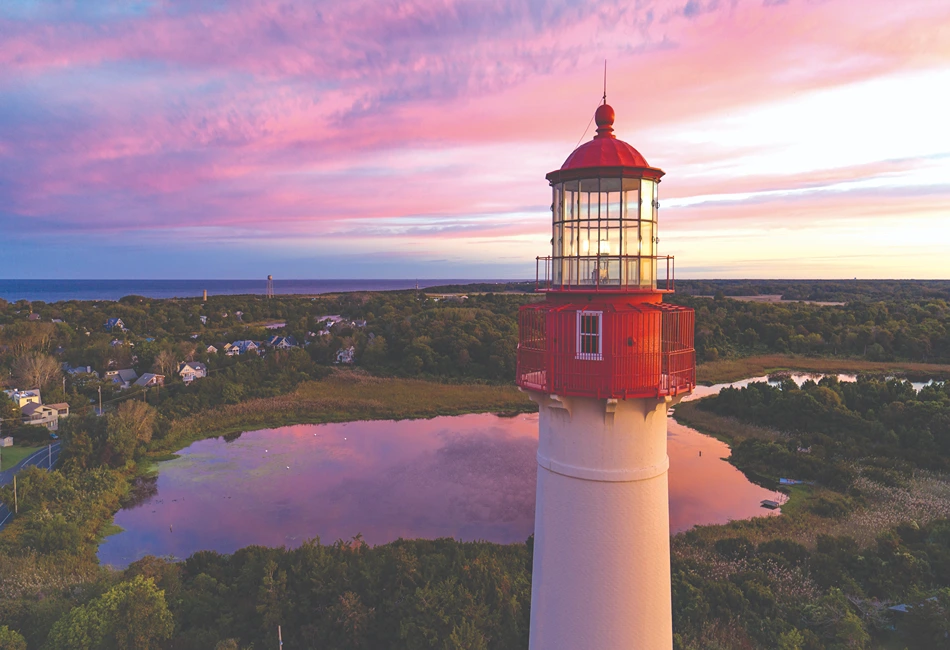Heart Mountain Interpretive Center tells the story of Japanese Americans who were unjustly rounded up and sent to a remote internment camp in the high desert.
Everyone’s familiar with the infamous Nazi concentration camps that tortured and killed millions of European Jews, but a less known chapter in World War II history involves camps in the United States where thousands of Japanese Americans were incarcerated for three years.
The Heart Mountain Interpretive Center between Cody and Powell, Wyoming, occupies the site of one of the federal government’s 10 “relocation centers” where Americans of Japanese ancestry lived in tar-papered barracks from 1942 to 1945. Ringed with barbed wire and surrounded by guard towers, the Wyoming camp was built on dusty barren land at the base of one of the state’s most iconic mountain peaks. More than 10,000 people were confined in what became the third-largest city in Wyoming. Hallowed ground, the confinement site is a National Historic Landmark.
Stay ahead in group travel planning with our free magazine subscription.
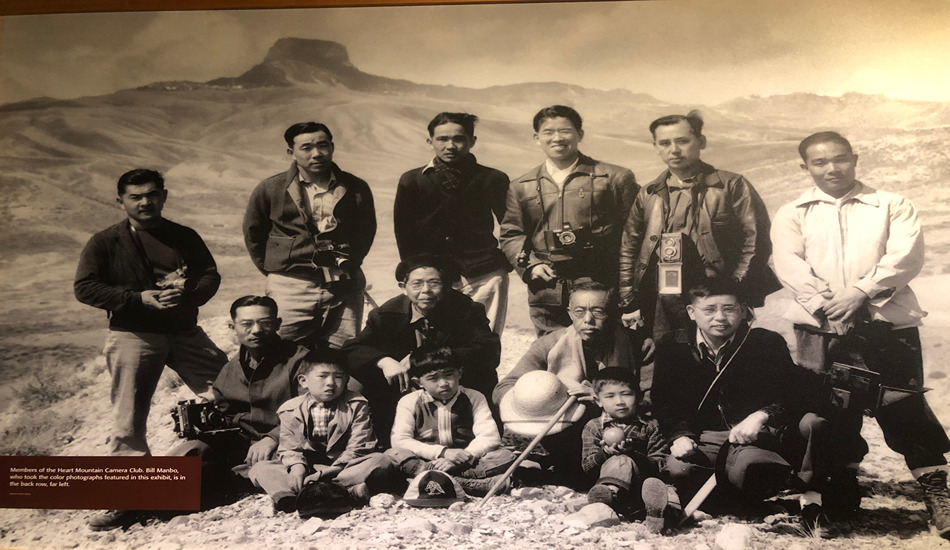
Heart Mountain Camera Club
Heart Mountain Site Preserves Some Uncomfortable History
Consisting of 650 buildings and other structures, including 450 barracks, the self-contained Heart Mountain community had its own schools, recreation centers, social clubs and farms. There were two movie theaters, a library, a store, barber and beauty shops, and places for Buddhist and Christian worship. The 150-bed hospital, staffed by Japanese American doctors and a primarily white group of nurses, saw the births of 566 babies. Though it appeared to have been a normal community, the lack of personal freedom and privacy kept it from being normal.
Visitors can walk up to the hospital boiler house, marked by a red brick chimney that can be seen for miles around, but cannot go inside. A restored barrack offers a glimpse into incarcerees’ bleak living conditions. A root cellar that stored produce from the fields is being restored and soon will be open to visitors.
Captivating museum exhibits at the Heart Mountain Interpretive Center shed light on this dark chapter in American history through artifacts, photographs and the 14-minute film “All We Could Carry,” which includes interviews with former prisoners.
Subscribe now for exclusive group travel insights and planning tips.
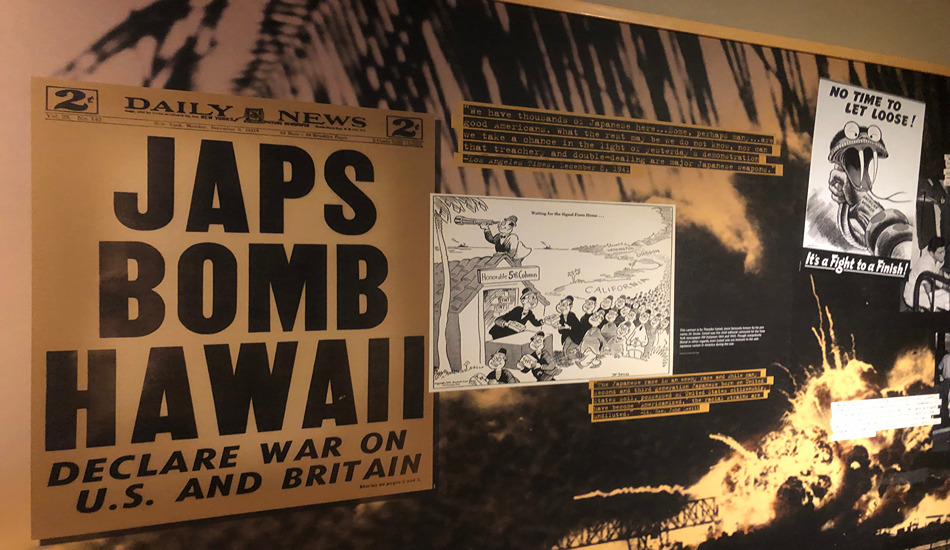
Exhibits at the Heart Mountain Interpretive Center chronicle camp life, anti-immigrant sentiments in America and events leading up to World War II. The bombing of Pearl Harbor in Hawaii spelled doom for Japanese Americans living on the West Coast. (Randy Mink Photo)
Wartime Hysteria Fuels Prejudice
Six weeks after Japan’s December 7, 1941 attack on Pearl Harbor, President Franklin D. Roosevelt issued an executive order that led to the forced removal of everyone of Japanese ancestry living on the West Coast. Responding to wartime hysteria, the government accused Japanese Americans of being enemy spies or saboteurs. Nearly 120,000 people, two-thirds of them American citizens, were imprisoned inside newly built concentration camps across the United States only because they had Japanese blood.
Well before WWII, Japanese and other Asian immigrants faced discrimination, even though they had blended successfully into society and were considered good Americans. During the war, some 750 young men and women from Heart Mountain served in the U.S. Army.
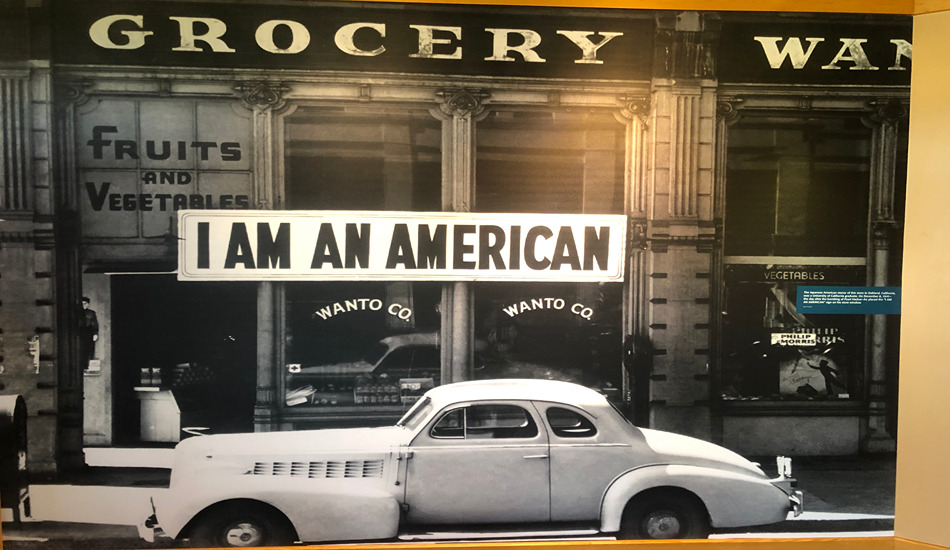
The Japanese American owner of this Oakland, California grocery store placed the “I Am An American” sign on his window the day after the bombing of Pearl Harbor.
Exhibits on this prejudice include an anti-Japanese newspaper cartoon by Theodor Geisel, author of the Dr. Seuss books. And there’s this quote from U.S. Army general: “The Japanese race is an enemy race, and while many second and third generation Japanese born on United States soil, possessed of United States citizenship, have become ‘Americanized,’ the racial strains are undiluted.”
Stay ahead in group travel planning with our free magazine subscription.
Heart Mountain Camp Life Was Bleak
Visitors at Heart Mountain learn that internees lived in cramped, uninsulated quarters where privacy was non-existent. They shared bathrooms in latrine buildings and ate meals in communal mess halls. Winter temperatures in early 1943 dropped to 28 degrees below zero.
Despite the hardships, people rallied to survive and made the most of their conditions, working with civilian administrators to build a functioning community. When the camp closed in 1945, incarcerees—ready to start their lives over but with nothing to go back to—were given only $25 and a train ticket to their chosen destination.
A quarter-mile paved walking trail, located where the camp administration buildings once stood, features informational panels that describe camp life and point out surviving features of the camp. One panel talks about Heart Mountain High School, which was staffed by mostly Caucasian teachers. “Not the least of problems,” it says, “was how to teach the tenets of democracy at the same time students were looking out the window at guard towers and barbed wire fences.” Another signboard focuses on the “swimming hole” and other recreation.
The Honor Roll near the trailhead lists the names of camp residents who served in the U.S. Army during WWII, while a nearby memorial honors Heart Mountain soldiers who made the ultimate sacrifice.
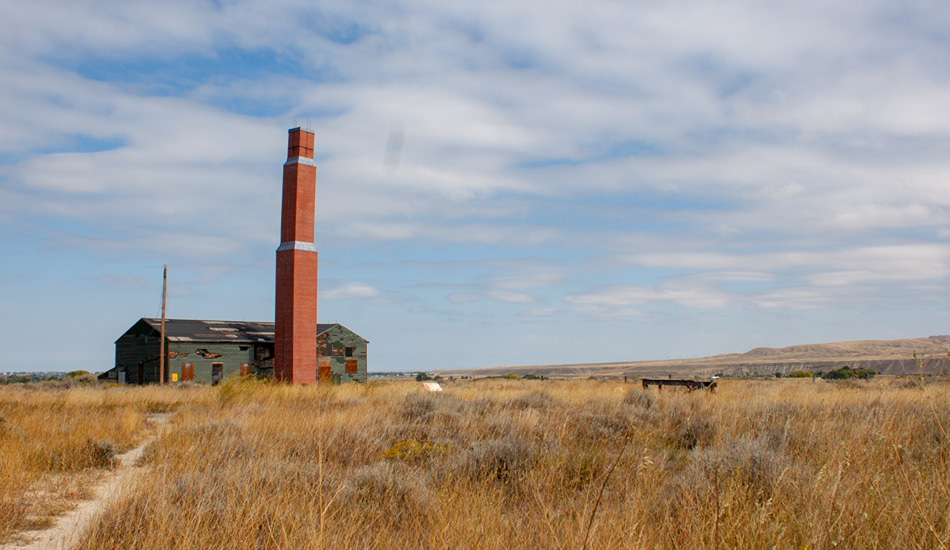
The chimney of the Heart Mountain hospital complex can be seen for miles around. (Photo credit: Wyoming Office of Tourism)
Mineta-Simpson Institute at Heart Mountain
The Mineta-Simpson Institute, a new dedicated retreat space at the Interpretive Center, offers workshops and other programming on social justice issues and the principles of democracy. It is named for former Republican Senator Alan Simpson of Cody and the late Norman Mineta, an internee who went on to become a Democratic U.S. Congressman and then U.S Secretary of Commerce and U.S. Secretary of Transportation. They met as Boy Scouts when the Cody troop visited the internee troop, renewing their ties years later in Washington, D.C. A museum exhibit is devoted to a friendship that flourished in spite of political differences.
Other Things to See and Do in the Cody-Yellowstone Area
Heart Mountain Interpretive Center is 13 miles from Cody, gateway to the eastern entrance of Yellowstone National Park. Known as the Rodeo Capital of the World, the town abounds with Western-themed shops and attractions, including the Cody Nite Rodeo, which is staged nightly during the summer.
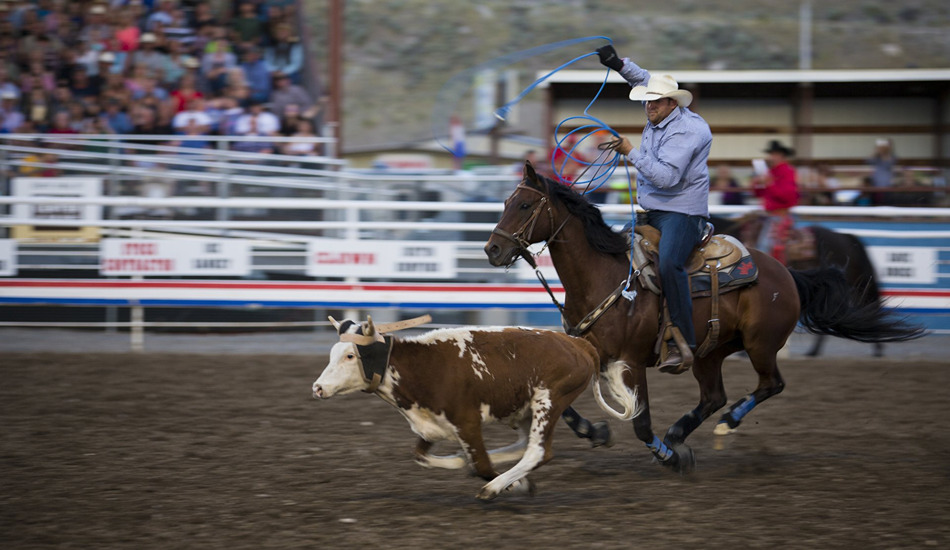
Code Nite Rodeo. (Photo credit: Cody-Yellowstone)
Cody’s top historical attraction is the Buffalo Bill Center of the West, a complex consisting of five museums that focus on Western history, Western art and the Yellowstone area’s natural treasures. Its Buffalo Bill Museum spotlights the life of William F. “Buffalo Bill” Cody, creator of the famous Wild Show that toured the world between 1883 and 1913.
For more information on Wyoming and other Western destinations, subscribe to Leisure Group Travel for FREE.
By Randy Mink, Senior Editor
Lead photo courtesy of Heart Mountain Interpretive Center

